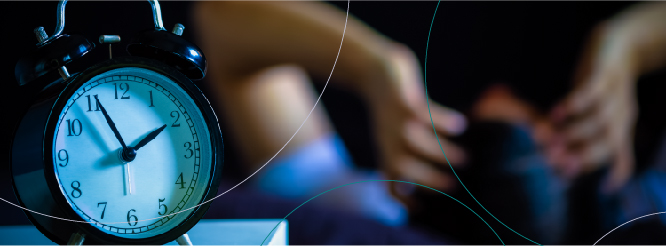
Obesity is nowadays considered as a worldwide epidemic that has been a by-product of our modern way of life. The prevalence of obesity among the worldwide population has nearly tripled in the last forty years [1]. The reasons of this are many. An important one is the availability of very practical and cheap, calorie-dense, high-fat, and sugar-rich foods offered in markets and fast-food restaurants. This creates an obesogenic environment where healthy food options are either scarce or expensive.
Another reason has to do with the affordances that technology provides to our daily lives. Advances in technology have led to a more sedimentary lifestyle, for instance, as people travel from one way to another in vehicles and not by foot nor bicycle, and as more and more people are employed to do computer-centered jobs and are motivated to stay seated and physically inactive for very long periods of time. Technology-based-entertainment has also contributed to the prevalence of obesity.
For instance, the availability of videogames, streaming services, internet, and general television entertainment has led audiences to dedicate more time seated while playing videogames, watching TV or browsing the internet than exercising in sports, outings and any kind of leisure physical activity. The COVID-19 pandemic, in many cases, has worsened this trend by forcing us to stay at home. It might not seem like it, but all these social and cultural changes in behavior impact our health in many different subtle long-term ways that can go unnoticed until it is too late.
One very interesting, yet worrisome, example of this is lack of sleep. As technology-based-entertainment is more easily available to us, kids, adolescents and adults tend to invest more of their time in electronics, sometimes sacrificing their sleep time. Yet, school and work or office hours start very early in the morning. So consequently, in the last decades, more and more people have been falling into the habit of sleeping less than they need. Sleep deprivation leads to many health problems as it hinders general quality of life.
Lack of sleep contributes to daytime sleepiness, chronic exhaustion, loss of concentration, less academic achievement and productivity, depression… and obesity. The link between poor sleeping habits and obesity is so direct and evident that some scientist are calling it a sleep deprivation-obesity epidemic of worrisome public-health consequences [2].
In what follows, we will talk about the relation between lack of sleep and obesity. We will learn that this link is bidirectional, as poor sleeping habits can lead to obesity and obesity can translate in lack of sleep. If you are interested in knowing more about obesity and sleep deprivation please contact LIMARP, our bariatric clinic located in Tijuana, Mexico. We will be glad to help.
Obesity as the first epidemic
The World Health Organization has estimated that a little more than half (52%) of the worldwide adult population is either overweight or obese, according to 2016 data. Obesity, unfortunately, also affects adolescents and children. The prevalence of overweight and obesity among children aged between 5 and 19 was of 18% in 2016, which amounts to 340 million children and adolescents worldwide [1].
However, these percentages vary from country to country. United States, Canada, and Mexico, for instance, are countries in which adult and adolescent overweight and obesity rates exceed the world average by far. In the United States, 73.6% of the adult population is either overweight or obese [3]. Of this percentage, 37% of adults are obese. In the other hand, 21% of adolescents aged 12 to 19, and 20.3% of children aged 6 to 12 are obese [3]. Canada’s numbers are less severe, but also high; 31% of its adult population and 11% of its adolescent population are obese [4]. In Mexico, 28% of its adult population and 14% of its adolescent population struggle from obesity [4].
Obesity is a public health problem because it leads to many ailments like type 2 diabetes, high cholesterol, heart disease, joint pain, gallbladder disease, osteoarthritis, obstructive sleep apnea and many more.
Obstructive sleep apnea, for instance, is a disease that obstructs the respiratory airflow during sleep due to the excess weight of the patient. Obstructive sleep apnea puts the patient’s health at risk and impedes the patient’s possibilities of resting through 8 hours of sleep. This ailment is one of many examples of how obesity and lack of sleep are closely related. We will discuss this further in one of the next sections of this post.
Lack of sleep as the second epidemic
According to the National Sleep Foundation guidelines, adults aged 18 to 64 should get 7 to 9 hours of sleep every night. Teens aged 14 to 17 should sleep between 8 and 10 hours every night, and elementary school aged children should sleep 9 to 11 hours every night [5].
National Sleep Foundation guidelines [5]
| Age range | Recommended hours of sleep |
| 0 to 3 months old | 14-17 hours |
| 4 to 11 months old | 12-15 hours |
| 1 to 2 years old | 11-14 hours |
| 3 to 5 years old | 10-13 hours |
| 6 to 13 years old | 9-11 hours |
| 14 to 17 years old | 8-10 hours |
| 18 to 64 years old | 7-9 hours |
| 65 or more years old | 7-8 hours |
But according to the 2005 Sleep in America poll of that same Foundation, adults in America sleep an average of 6.9 hours a night. 40% of the poll respondents reported getting less than 7 hours of sleep a night on weekdays, and 71% reported getting less than 8 hours of sleep [6].
In the case of adolescents, a 2006 poll suggests that only 20%of adolescents get an optimal amount of sleep on school-nights (meaning 9 hours or more). This improves over the weekend, when 57% of adolescents get an optimal amount of sleep on non-school-nights [7].
It seems, then, that kids and adolescents are getting less sleep than ever before.
Data on 690,747 children and adolescents from 20 countries showed a secular decline of 0.75 min/night/year in sleep duration over the last 100 years, with the greatest rate of decline in sleep occurring for adolescents and on school days [8].
A more recent poll of 2020 indicates that American adults feel sleepy 3 days a week! This impacts negatively on their mood, activities and acuity [9].
Lack of sleep, either in adults, adolescents or children, does impact general health in a negative way as it can lead to nervous, cardiovascular, respiratory and metabolic conditions, and it also increases the risk of developing diabetes and ischaemic heart disease [2]. But also, many large scale epidemiological studies have linked poor sleeping habits with an increase prevalence and incidence of obesity [2].
How are lack of sleep and obesity related?
The fact that lack of sleep causes obesity is ironic, but scientific evidence has been consistent in showing that lack of sleep is related to obesity. A meta-analysis review of 12 studies that involved 30,002 children and adolescents from around the world showed an odds ratio of 1.89 for lack of sleep associated with obesity. This means that 89% of children and adolescents who suffer from lack of sleep also struggle from obesity [8]. And many scientific studies have showed the same trend.
But, how can the most sedentary activity of all time, sleep, cause obesity? Different reasons have been discovered:
- Staying awake for longer periods of time means you have more opportunities of overeating. Lack of sleep, then, increases food intake. This trend has been observed both in adults and adolescents:
Spaeth et al. reported that sleep-restricted participants tested under controlled laboratory conditions (N=225 healthy adults) gained 1 kg more than controls after 5 consecutive nights of 4 h in bed per night. Sleep-restricted participants consumed extra calories (130% of daily caloric requirements) and the increased daily energy intake was due to more meals eaten and the consumption of about 550 additional calories during late-night hours [8].
- Lack of sleep is a stressor to our metabolism and induces adverse effects on a variety of body systems and hormones [8]. An important study done by Spiegel et al. found that lack of sleep alters many appetite hormones in adults, such as ghrelin and leptin. He also found out that lack of sleep impaired glucose tolerance [2], [8]. This is one of the reasons why lack of sleep has also been associated with a higher risk of developing type 2 diabetes.
- Lack of sleep leads to exhaustion and fatigue during the day. Fatigue usually inhibits people from doing exercise. So, more inactivity arising from tiredness and sleepiness can make us spend less energy through our day and storing more calories as fat in our bodies.
These are three mechanisms through which lack of sleep translate to obesity. But this relation can also be established in the opposite direction: obesity in itself can lead to lack of sleep through obstructive sleep apnea and other pulmonary ailments.
Obstructive sleep apnea
Obstructive sleep apnea is a disease that is very prevalent among obese patients. More than 90% of adult patients with obstructive sleep apnea are obese [10]. This disease is characterized by continuous episodes in which the patient stops breathing while sound asleep during the night. The reason why the patient stops breathing is because his or her weight and musculature obstruct the airway passage to the trachea.
The deposition of fat around the tongue, soft tissue in the pharynx, a wide circumference of the neck, and decreased of muscular tone that relaxes while sleeping contribute to the blockage of the airways. When the apnea begins, the patient starts receiving less and less air, both heart rate and blood pressure start to decrease too. When the patient reaches a critical level, he or she arouses with a reflex surge with tachycardia and hypertension. A person that sleeps normally could have up to 5 apneas per hour on average. A person who struggles with sleep apnea could have from 6 to more than 30 apnea episodes per hour [10].
Clinical symptoms of obstructive sleep apnea include loud snoring, witnessed apnea, arousal with gasping and choking, disrupted sleep, restless sleep, daytime sleepiness, and inappropriate falling asleep [10].
Complications of obstructive sleep apnea includes premature death, sudden death from cardiac causes, nocturnal cardiac arrhythmias, hypertension, ischaemic heart disease, and stroke [10].
Bariatric surgery as a treatment option
Bariatric surgery is a safe and effective treatment for obesity that accomplishes weight loss and that improves, and in many cases resolves, different health conditions such as type 2 diabetes, hypertension, obstructive sleep apnea, heart disease, and many more. With bariatric surgery, a patient can lose as much as 30% of their total body weight or 80% of their excess weight. Patients eligible for bariatric surgery have a body mass index (BMI) higher than 35 and more than 2 obesity related diseases, or have a BMI higher than 40. Adolescents who meet these characteristics are also eligible for bariatric surgery with their parents’ or tutor authorization.
Examples of bariatric surgery include gastric sleeve, gastric bypass, duodenal switch, intragastric balloon and gastric clip.
At LIMARP International Center of Excellence for obesity, we offer surgical and non-surgical treatments for obesity. Our clinic is certified as a Center of Excellence by the Surgical Review Corporation and is one of the leading medical tourism destinations in Tijuana and Baja California. Our leading surgeon and CEO, Dr. Liza María Pompa González has performed thousands of bariatric surgeries to patients that travel from all around the world to our clinic. She has been certified both as Master Surgeon and Surgeon of Excellence by the Surgical Review Corporation, which makes her the first female surgeon to receive this acknowledgment from the Corporation.
We are located only 15 minutes away from the International Border of San Ysidro, in the business district of Tijuana, right next to the city’s urban golf course, in the Twin Tower Complex of Aguacaliente.
Our integral bariatric program treats obesity from a multidisciplinary approach that includes a surgical or non-surgical intervention, psychological counselling, nutritional guidance, a personalized fitness plan, and long-term follow-up to accomplish life-lasting weight loss results, great health and wellness.
Contact us
If you are interested in knowing more about lack of sleep and obesity, call our clinic today. At LIMARP International Center of Excellence for obesity, we offer integral bariatric programs that include medical, psychological, nutritional, behavioral and physical interventions for defeating obesity with long-lasting results. Call our clinic today to schedule a free consultation. Our team of experts will be glad to help.
References
[1] World Health Organization, “Obesity and overweight,” Apr. 01, 2020. https://www.who.int/news-room/fact-sheets/detail/obesity-and-overweight (accessed Nov. 02, 2020).
[2] A. Currie and F. P. Cappuccio, “Sleep in children and adolescents: A worrying scenario,” Nutr. Metab. Cardiovasc. Dis., vol. 17, no. 3, pp. 230–232, Mar. 2007, doi: 10.1016/j.numecd.2006.10.007.
[3] Centers for Disease Control and Prevention, “Obesity and Overweight,” National Center for Health Statistics, Mar. 01, 2021. https://www.cdc.gov/nchs/fastats/obesity-overweight.htm (accessed Sep. 19, 2021).
[4] World Health Organization, Noncommunicable diseases country profiles 2018. World Health Organization, 2018. [Online]. Available: https://apps.who.int/iris/handle/10665/274512
[5] E. Suni, “How Much Sleep Do We Really Need?,” Sleep Foundation, Mar. 09, 2021. https://www.sleepfoundation.org/how-sleep-works/how-much-sleep-do-we-really-need (accessed Sep. 19, 2021).
[6] National Sleep Foundation, “2005 Sleep in America Polls,” 2005. Accessed: Sep. 19, 2021. [Online]. Available: https://www.sleepfoundation.org/wp-content/uploads/2018/10/2005_summary_of_findings.pdf
[7] National Sleep Foundation, “2006 Sleep in America poll.” https://www.sleepfoundation.org/wp-content/uploads/2018/10/2006_summary_of_findings.pdf (accessed Sep. 19, 2021).
[8] J.-P. Chaput and C. Dutil, “Lack of sleep as a contributor to obesity in adolescents: impacts on eating and activity behaviors,” Int. J. Behav. Nutr. Phys. Act., vol. 13, no. 1, p. 103, Dec. 2016, doi: 10.1186/s12966-016-0428-0.
[9] National Sleep Foundation, “Sleep in America poll 2020.” Accessed: Sep. 19, 2021. [Online]. Available: https://www.sleepfoundation.org/wp-content/uploads/2020/03/SIA-2020-Q1-Report.pdf
[10] R. M. Gomes, “Perioperative Management of Obstructive Sleep Apnea After Bariatric Surgery,” in Bariatric Surgical Practice Guide, P. R. Palanivelu, S. Kumar, and R. M. Gomes, Eds. Springer, 2017, pp. 179–187.


